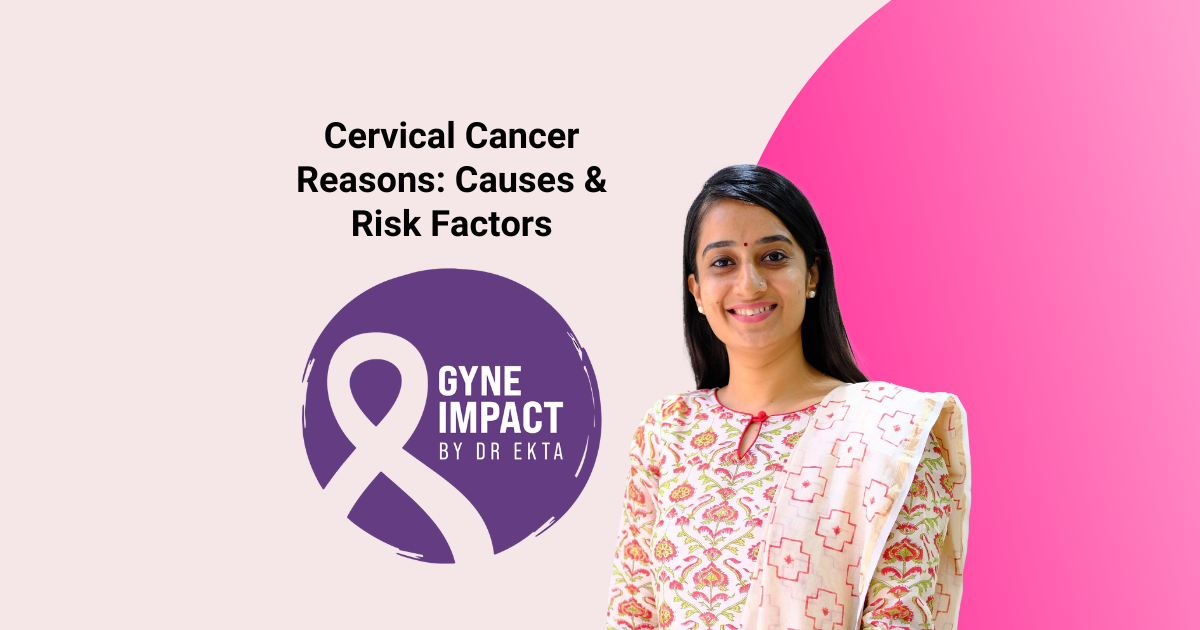Cervical cancer is one of the most preventable and treatable types of cancer when detected early, yet it remains a major health concern for women globally. Understanding the cervical cancer reasons can empower women to take proactive steps toward prevention, early detection, and informed healthcare decisions. This blog provides a comprehensive breakdown of the causes and risk factors of cervical cancer in simple, accessible language.
What Is Cervical Cancer?
Cervical cancer develops in the cells lining the cervix, the lower part of the uterus that connects to the vagina. It often grows slowly and may not show symptoms in the early stages. Regular screenings, such as Pap tests and HPV tests, play a crucial role in detecting precancerous changes before they develop into cancer.
Key facts:
- Caused by abnormal cell changes in the cervix
- Can be detected early through routine screening
- Highly preventable with HPV vaccination and regular follow-ups
Primary Cause: Human Papillomavirus (HPV) Infection
The most common and well-established cause of cervical cancer is infection with the human papillomavirus (HPV). HPV is a group of viruses, and certain high-risk types are directly linked to cervical cancer.
Important points about HPV:
- Transmitted through sexual contact
- Most sexually active people will contract HPV at some point
- High-risk types like HPV-16 and HPV-18 cause nearly 70% of all cervical cancers
HPV-related risk increases when:
- There is persistent infection with high-risk HPV types
- Regular screenings are missed
- The immune system is weakened due to other health issues
Other Cervical Cancer Reasons and Risk Factors
While HPV is the primary cause, several other factors contribute to the risk of developing cervical cancer.
1. Early Sexual Activity
Starting sexual activity at a young age increases the risk of HPV exposure and infection.
Why it matters:
- The cervical cells are more vulnerable during adolescence
- Increases the chances of long-term persistent HPV infection
2. Multiple Sexual Partners
Having many sexual partners, or having a partner who has multiple partners, raises the risk of contracting high-risk HPV types.
Risk increases when:
- Sexual history includes unprotected sex with multiple people
- Lack of condom use, which may reduce but not eliminate HPV risk
3. Weakened Immune System
Women with weakened immune systems, especially those with HIV/AIDS or on long-term immunosuppressive therapy, are at a higher risk.
Reasons include:
- Inability to clear HPV infections naturally
- Faster progression from precancerous lesions to invasive cancer
4. Smoking
Tobacco use is linked to cervical cancer development. Carcinogens from smoking affect the DNA of cervical cells and weaken immune response.
Key concerns:
- Doubles the risk of cervical cancer
- Increases susceptibility to persistent HPV infections
5. Long-Term Use of Oral Contraceptives
Using birth control pills for more than five years has been associated with a slightly increased risk of cervical cancer.
What research shows:
- Risk decreases after stopping contraceptive use
- Always balance benefits and risks with your doctor
6. Giving Birth to Many Children
Women who have had three or more full-term pregnancies may be at greater risk.
Possible reasons:
- Hormonal changes during pregnancy may make the cervix more vulnerable
- Increased exposure to HPV during unprotected sexual activity
7. Lack of Regular Screening
Routine Pap smears and HPV testing help detect abnormal cells before they become cancerous.
Consequences of skipping screening:
- Delayed diagnosis
- Missed opportunity for early intervention
Genetic and Environmental Factors
Although rare, certain genetic factors can play a role in cervical cancer risk.
Examples include:
- Family history of cervical cancer
- Genetic conditions that impair immune response
Environmental exposures, such as unsafe sanitary practices or long-term exposure to toxic chemicals, may also increase risk in certain populations.
Preventive Strategies and Lifestyle Choices
Knowing the reasons behind cervical cancer helps women take meaningful steps toward prevention.
Prevention tips include:
- HPV vaccination: Recommended for girls and boys from ages 9 to 26
- Safe sex practices: Using condoms and limiting sexual partners
- Regular screenings: Pap tests every 3 years or HPV testing every 5 years, depending on age
- Smoking cessation: Reduces overall cancer risk
- Healthy immune system: Through good nutrition, exercise, and stress management
When to See a Doctor
Early cervical cancer may not have symptoms, but advanced cases may cause:
- Unusual vaginal bleeding or discharge
- Pain during intercourse
- Pelvic pain
If you experience any of these signs or have concerns about your risk, consult a gynecologic oncologist.
Final Thoughts: Knowledge Is the First Step to Prevention
Understanding cervical cancer reasons empowers you to take control of your health. While HPV is the leading cause, other risk factors play a supporting role. With preventive measures like vaccination, regular screening, and healthy lifestyle choices, cervical cancer is largely preventable.
Concerned about your risk for cervical cancer? Schedule a screening or speak with our specialists to learn more.
References:
- National Cancer Institute: https://www.cancer.gov
- Centers for Disease Control and Prevention: https://www.cdc.gov/cancer/cervical
- American Cancer Society: https://www.cancer.org

